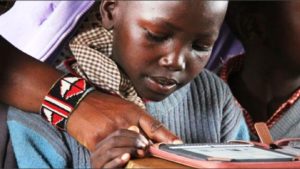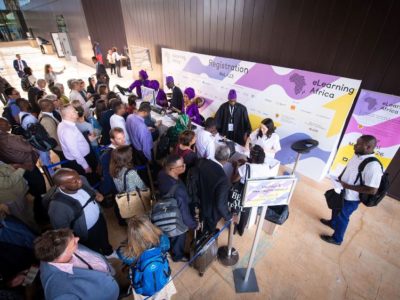- A UOC study of digital consumption between the ages of 14 and 35 also highlights a decline in attention spans
- Socio-cultural environments determine consumption models and have an impact on how knowledge is absorbed
- The study, carried out in partnership with Accenture, will help adapt the creation of educational content to new consumption habits
(Infographic – Digital consumption trends. Author: UOC)
A study by the eLearning Innovation Center (eLinC) at the Universitat Oberta de Catalunya (UOC), in partnership with Accenture, has provided an overview of the main trends in how young people consume digital content. The results show that the mobile phone is the primary tool for reading digital content for 70% of people aged between 14 and 35. The report also points out that digital formats make this group more prone to distraction than paper, which is more conducive to concentration. The future of digital content consumption, which is available in open access format in the UOC repository, points out that, in a context of information overload, the only organizations that will thrive will be those that are able to capture users’ attention.


This is not surprising: according to the data included in the study, humans’ attention span has fallen from 12 to 8.2 seconds in 15 years. Likewise, tools such as mobile phones, which we consult more than 150 times a day, place our ability to concentrate under further stress. “It’s quite obvious that multitasking reduces our efficiency. However, at the same time we’re also seeing that young people exercise considerable judgement when making a distinction between how to use different devices, formats and channels, depending on what they’re doing or what they’re trying to achieve,” explained Guillem Garcia Brustenga, an expert in trend spotting and analysis at the eLinC, and the coordinator of the study.
Over 100 indicators
In the first phase of the study, the researchers analysed 111 reference indicators for digital content in order to identify the factors which have an impact on consumption, understand macro trends, extract data about young people’s behaviour and understand the market logic behind educational content.
They found that the students who had the greatest difficulties in concentrating prefer content in video format for discovering or clarifying concepts. Digital content now plays a central role in young people’s lives, in a context in which there is a clear trend towards monetization and virtualization: a third of them want to be influencers, and one in five think they could become a professional gamer.
Impact on health
The UOC study also highlights the impact of digital overexposure on this group’s mental health: 20% of young people experience symptoms of insomnia, 40% say they go online to overcome feelings of loneliness, and 81% suffer from nomophobia (fear of being without their mobile phone). According to the experts consulted, these expanding pathologies are exploited by all kinds of organizations to attract greater numbers of young users through various marketing strategies.
Another important point is that the digital content consumption model differs widely among young people, and its determining factors cannot be understood without knowing their lifestyle. The young people with the best reading comprehension skills are those with high levels of education, who also have a more positive socio-economic environment and do more physical and leisure activities outside the home. “Age, social class and leisure habits determine an individual’s ability to absorb knowledge,” confirmed Garcia Brustenga.
Generational differences
In the second phase of the study, qualitative research was carried out by means of interviews with experts in education and psychology at the UOC and elsewhere, as well as with students in Spain and Mexico. This showed that not all generations of young people are the same. Members of generation Z (born in the late 1990s and early 2000s) prefer physical rather than virtual interactions – 78% of them believe that the teacher plays a very important role in their learning and development – while members of generation Y (born from the early 1980s to the late 1990s), who have been studying for years, are seeking the flexibility offered by self-directed and 100% digital formats. In general terms, there is also some polarization among students according to what they expect from their university: some settle for the minimum, while others are highly motivated.
“After the data have been analysed and the macro trends have been identified, the results of this study will help the specialists at the eLinC and the rest of the UOC to continue towards optimizing digital education, focusing their research on new models, formats and content that provide sufficient motivation and seek to establish an emotional bond with the student,” explained the director of the eLinC, Sílvia Sivera.
This UOC research supports sustainable development goals (SDGs) 4 (Quality Education) and 8 (Promote sustained, inclusive and sustainable economic growth, full and productive employment and decent work for all)
Reference article:
The future of digital content consumption (2022). Universitat Oberta de Catalunya, Accenture. http://hdl.handle.net/10609/147507































